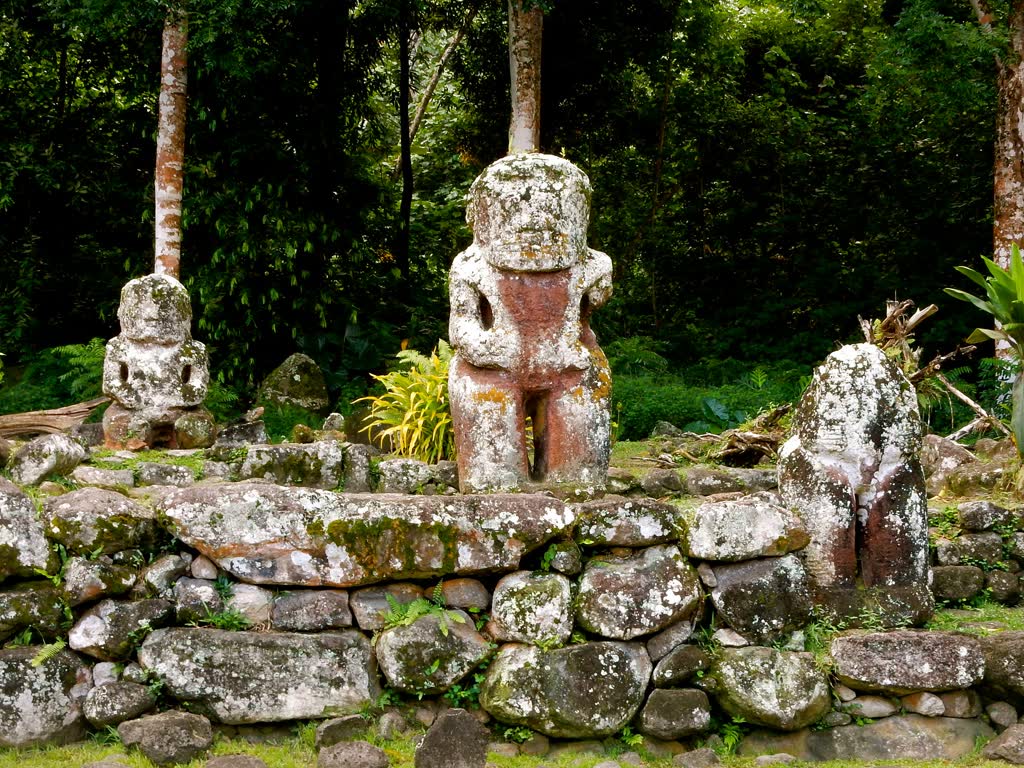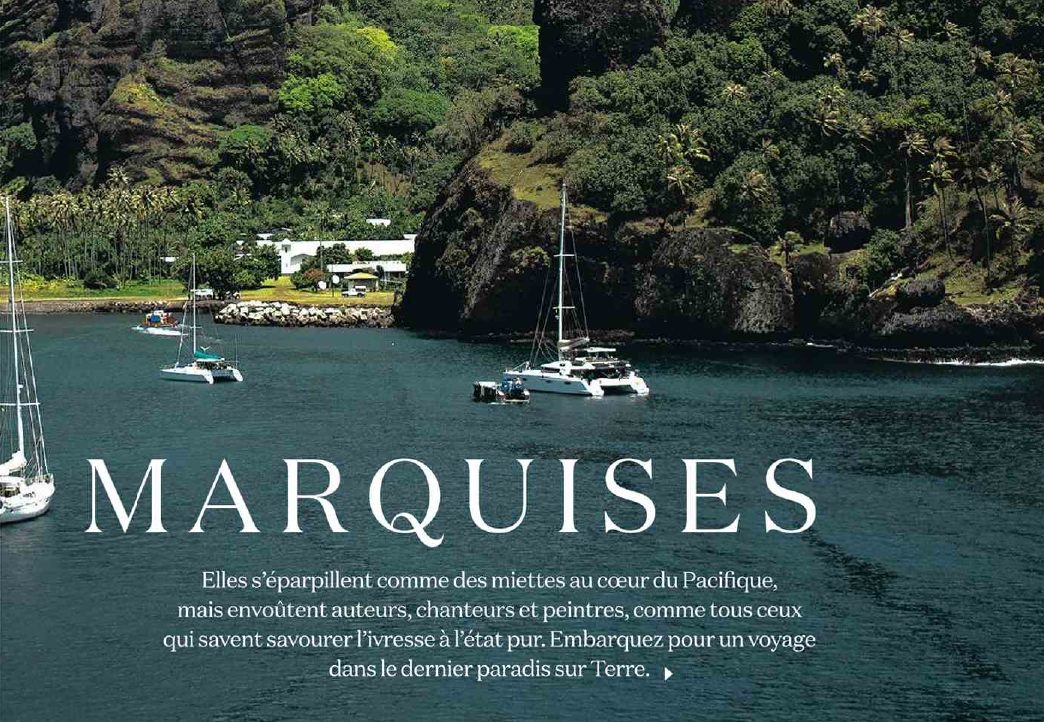The Polynesian Tiki, a significant cultural symbol

28/04/2023
Polynesia, a group of islands in the Pacific Ocean, is known for its rich culture and tradition. One of Polynesia's iconic cultural symbols is the tiki, a sculpture or statue found in many different styles on the various Polynesian islands. The tiki has a long and interesting history and still plays an important role in Polynesian culture today. For example, the tiki is one of the most famous and fascinating cult figures.
This symbol of Polynesian art and culture is revered on various islands and has a deep spiritual meaning and a long history that goes back to the mystical origins of the islands. It is a human-like figure often carved from wood or stone. It is often depicted as a statue or in relief in wood or stone. It usually has large eyes, a flat nose and a broad, smiling face. However, there are differences in how it is depicted on different islands, for example, the tiki in Hawaii often has a large head and a small body, while the tiki in New Zealand often has a long, pointed nose.
In Polynesian culture, the tiki represents the connection between man and nature, between heaven and earth, and symbolises creation and life itself. The Polynesians believed that the tiki was a patron saint and good luck charm and worshipped it as a kind of idol.
The mystical origin of the tiki

The origin of the first tikis varies from island to island and is accompanied by myths and legends. The Hawaiian legend, for example, tells of Ku, the god of heaven and creator of the world. Ku created the first tiki out of clay and breathed life into it by opening its eyes. The tiki became the first human being and Ku instructed him to create more humans out of clay. On the island of Tahiti, on the other hand, the story is told about Tiki, the creator of the world, who formed the first Tiki from a lump of clay and breathed life into him.
On each Polynesian island, the tiki has its own style and meaning. In Hawaiian myths, the tiki is often depicted as slender and elongated, while in Tahiti it is more corpulent and has a large nose. In New Zealand, where the tiki is also known as the hei-tiki, it is worn as an amulet and represents fertility and prosperity. In Fiji, on the other hand, the tiki is known more as a symbol of war and strength and is often depicted with weapons and armour.
Traditional tikis are hand-carved and often made of wood, stone or bone. This craft is still alive in the Polynesian islands and is practised by many artists. The tikis are often depicted in elaborate and detailed carvings that illustrate their mythological meaning and symbolism.
The tiki also has a strong symbolic meaning in today's society. It is often seen as a symbol of exoticism and adventure and is an important part of popular culture. Tiki has also influenced modern tattoo culture, particularly Maori tattooing.
From traditional tiki to contemporary art

In Polynesian art, the tiki has evolved over the centuries and has been reinterpreted time and again by Polynesian artists. Today, Tikis can be found in various artworks such as paintings, sculptures, jewellery and clothing. The artworks often depict the spiritual powers and symbolic meaning of the tiki in Polynesian culture.
In the 1940s, tikis became increasingly popular in the Western world, especially in England, leading to the emergence of the tiki art movement. This movement was very popular in the 1950s and 1960s in the USA and influenced the popular culture of the time.
The first tikis arrived in California from Hawaii in the 1930s, when the Hollywood elite discovered Polynesia as an exotic destination. Tiki art and culture quickly became popular, and tiki bars became a phenomenon in the 1940s, spreading rapidly throughout the United States. These bars are an important part of Tiki culture and offer a unique atmosphere characterised by exotic drinks, tikis and Polynesian-inspired decor. In tiki bars, you can often see many handmade tikis that can be used as decorative items, such as the tiki cup. Tikis have also found their way into other areas of popular culture such as film and television, fashion and music. For example, there are now numerous online shops where Tiki items such as T-shirts, masks or Tiki mugs can be ordered. There are many different categories here at different prices.
The current role of tiki in Polynesian culture
Although the tiki continues to play an important role in Polynesian culture today, there are also some challenges regarding the representation and appropriation of the tiki. There are people who use tikis in inappropriate ways and do not respect the symbolic and cultural significance of the tiki. The cult of the tiki allows people to immerse themselves in a world of their own and escape from everyday life, and has little reminder of the original meaning. Nevertheless, it is important that the tiki is respected and protected as a symbol of Polynesian culture. Preserving the cultural heritage associated with the tiki is of great importance. There are organisations and groups dedicated to the preservation and protection of Polynesian cultural heritage. These groups work to preserve and pass on the knowledge and art of traditional tiki making.
Tikis also play an important role in tourism. Many destinations in Polynesia use tikis as part of their tourist attractions and to market their culture. However, it is important that the commercial use of the tiki, e.g. as decorative items, respects the symbolic and cultural significance of the tiki. Today, stonemasons and sculptors work to ensure that tourists can take home souvenirs that show the Marquesans' love for their island.
The Aranui 5 cruise to the Marquesas Islands is the ideal opportunity to discover Polynesia's most emblematic tikis, especially on the island of Hiva Oa in Puamau Bay. Here you will find several different types of tiki at once:
The smiling tiki, whose face lights up to the eyes; the reclining tiki (Tiki Taua Pepe), representing a woman giving birth; the slender tiki (Tiki Manuiotaa), whose head was cut off and put back on by archaeologists; and the tiki without a head (Tiki Te Tovae E Noho), but with its original 6 fingers. Then there is the largest Tiki in Polynesia (Tiki Takaii), which is 2.67 m high and made of red volcanic stone. You can also see the crowned tiki (Tiki Moeone), which has been swallowed up by vegetation but is still so beautiful, and the two tikis of the Princess of Tehaumoea next to her tomb.
During the various stops of the Aranui 5, you will have the opportunity to buy exceptional souvenirs in the centres of this craft, including, for example, a tiki statue carved from rosewood.
To conclude
In summary, the tiki has important cultural and symbolic significance for Polynesia. The tiki represents a connection to the spirits and nature and its display and use should be respectful and appropriate. The meaning of the tiki has changed throughout history and now plays an important role in contemporary art. The Tiki is now a symbol of Polynesia and its culture, and its uses range from decorating bars and restaurants to designing surfboards and skateboards.
The use of tikis in tourism has helped to generate interest in Polynesian culture. However, the representation and appropriation of the tiki in contemporary society is fraught with challenges, especially in terms of respecting Polynesian culture and avoiding stereotypes.
The history of the tiki shows the close connection between Polynesian culture and nature, and the importance of faith and spirituality to this society. The tiki remains an important part of Polynesia's cultural heritage and a symbol of the Polynesian peoples' connection to their past and their future.

À lire aussi



